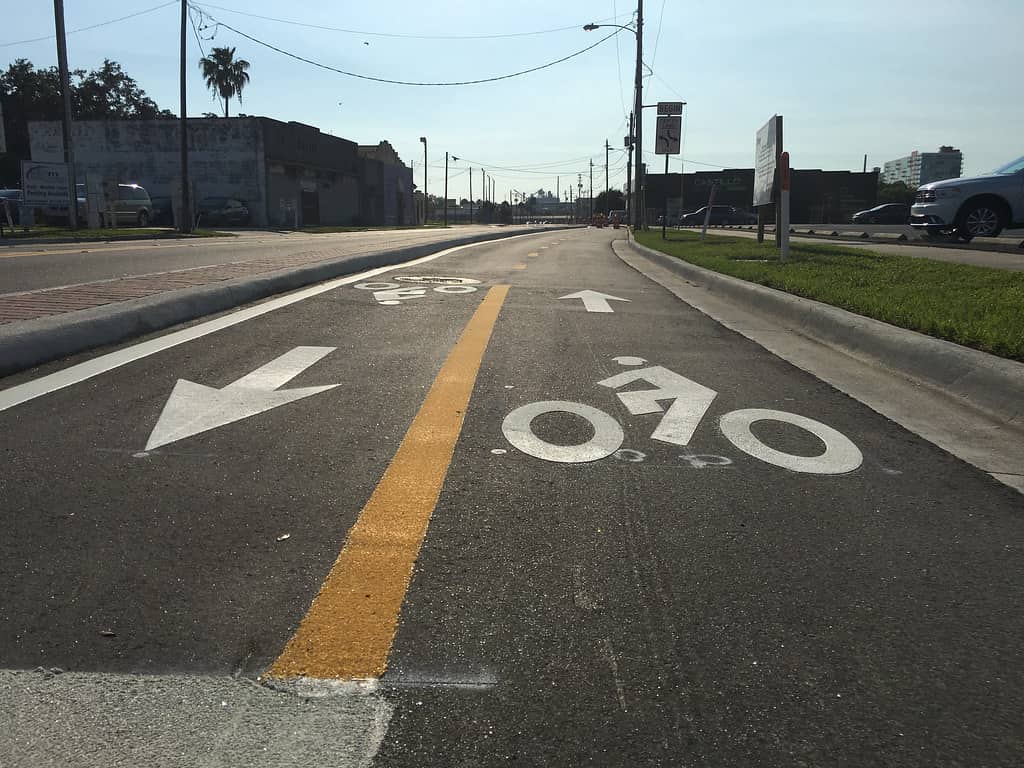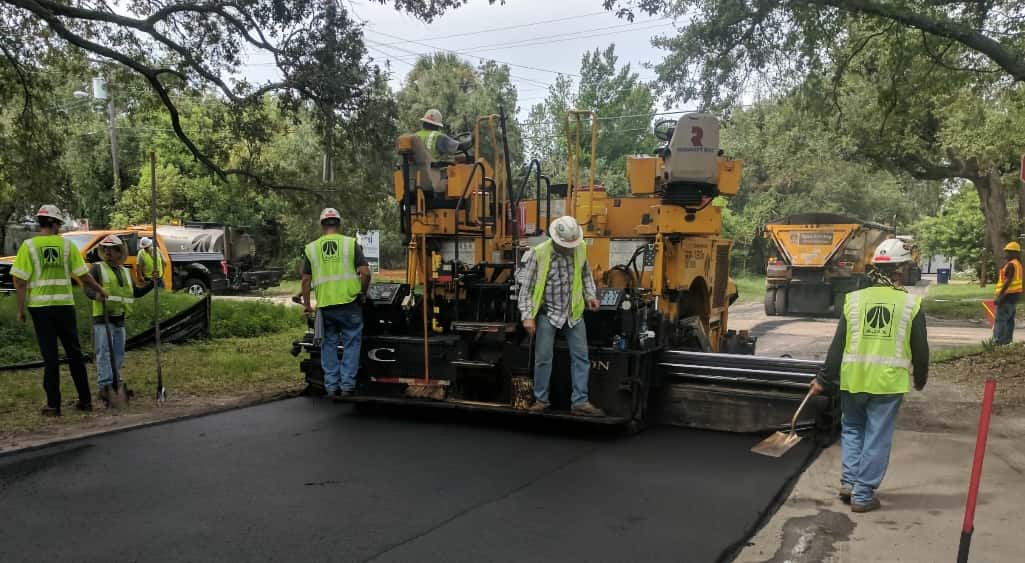Council meets for a regular meeting Thursday morning with a special call land use meeting Thursday evening. Normally I cover the meetings in order, but with the significance of the evening meeting I’m going to switch it up. The main thing I want to emphasize is this: this is a transmittal hearing, not an adoption hearing.. This is an important procedural step but not the final one. Which is important because there are a slew of changes being proposed from the original language presented in May.
As to the changes, I haven’t reviewed them closely but the Planning Commission sent out their regular monthly email Friday with a few details.
Planning Commission staff have made significant changes to the Future Land Use update based on resident feedback, with the goal of protecting single-family neighborhoods. The updated draft reduces areas where townhomes may be considered, removes the rounding up provision, removes corridors eligible for residential density bonuses and narrows the remaining areas eligible for residential density bonuses. These changes come after 15 meetings across Tampa with nearly 850 people and over 1,000 survey and in-person responses from residents. Tampa City Council will vote on the proposed changes at their August 28 transmittal hearing.
As to “protecting single-family neighborhoods”, the memo accompanying the agenda workshop item notes
In total, the parcels eligible for townhomes in the Residential-10 has been reduced from approximately 22,400 as proposed in May 2025 to approximately 5,400 under the new proposal. The parcels eligible for the TRC bonus have been reduced from 36,200 in May 2025 to approximately 24,300 under the new proposal.
This is a good place to note I’m avoiding commenting further on the proposed plan or any suggested changes. Previously I’ve questioned the fuzzy math the planning commission was using for the amount of increased density that’s required. I’m looking forward to more quantifying of the proposed changes like the above mentioned reductions and will have a full wrap up Friday.
All that said, to reiterate, this isn’t a final adoption hearing. It’s not even first reading. It’s a transmittal hearing. When this first appeared on the agenda in May, there were 2 more hearings scheduled. Planning commission staff stated council would have an opportunity to make changes after the transmittal. Council chose to delay the whole process. If the transmittal is approved, the recommended plan update is sent to the state Department of Economic Opportunity for review. The DOE then issues either objections or recommendations as well as a comments report. Adjustments may need to be made to satisfy the state, at which point it would move forward for first reading. If not approved, I’m not 100% sure what the process is other than to go back to the drawing board making adjustments as dictated by council. With the three month delay, I believe there’s a deadline for the 2045 plan adoption council is up against. Perhaps there will be negotiations during the special hearing to get to 4 votes or there will be clarification on what really could change between transmittal and a final vote. With the state on the war path against local government, who is to say what happens next. Good thing the current plan accommodates all but 3,000 of the anticipated population growth in 20 years.
Morning Regular Meeting
For the regular day time agenda, council will be considering 83 items with 71 requiring a vote. Contracts range from $14,698 for a wastewater software license to $81,546,855 for a planned “Dissolved Air Reactor Rehabilitation” also for wastewater.
One item in-between I will mention is one Stephanie Poynor pointed out in her weekly agenda review. Item 28, $1,955,492 for “Athletic Field Citywide Lighting Design-Build”. Excuse me? The summary sheet sheds no light on what the project is either. It should not require contract sleuthing to find the answer in Appendix E, Section 2: Scope. The contract covers 3 parks: Rowlett Park, Calvin Taylor Park and the Himes Avenue Sports Complex. All 3 include removing and replacing all of the lighting. There have been line items in the capital improvement plan (CIP) for the last couple of years for “citywide athletic field lighting”. Last year when I wrote about the budget I noted for parks:
The City did a Parks and Rec master plan 3 years ago.
The Implementation Plan, which is the final step for the City of Tampa PRMP, focuses on the execution of the Vision and guiding principles through several components that are intended to define the direction of the Parks and Recreation System for the next 10-15 years and beyond.
Where’s the implementation plan and how is it reflected in the budget?
I don’t understand why with such a detailed Master Plan the parks CIP budget is mostly generic buckets while other departments have line items broken down to the tens of thousands of dollars. What was the purpose of the Master Plan? When council approves a capital improvement project, it should be extremely clear where that money is being spent.
Another item of note is item 46. With the impending special election for District 5, the Supervisor of Elections for Hillsborough County has requested the use of Desoto Park in Palmetto Beach in addition to the 6 previous parks approved by the city.
Council will be voting to approve the updated community redevelopment plans for the Central Park, Tampa Heights Riverfront and downtown redevelopment districts. There hasn’t been much discussion about these plans but that doesn’t change their significance. These items appeared on the July 31st agenda and at the time now candidate for District 5 Allison Hewitt submitted comments noting among other issues “there has been no comprehensive public update or report presented on the successes, shortcomings, or measurable outcomes of the current CRPs.” In essence, how can you update a plan if you don’t know what did and didn’t work? Though I’m not sure I’ve ever heard the CRP discussed when deciding on approving a project. The objectives tend to be so broad that any project can be applied if you squint just right. Or in some cases, just close your eyes.
Additionally there’s a public hearing, item 66, for a “comprehensive revision” of the Chapter 9 of the municipal code – code enforcement. Which seems odd as I don’t recall this topic being discussed previously. Generally ordinances related to code changes go through a process that often includes a workshop. It is a first reading so there will be an opportunity to weigh in before adoption if details arise that warrant further discussion.
Likewise there’s a public hearing to establish the Charter Review Commission. This is a procedural step for a Charter required citizen review to commence in January of 2026 and complete in time for council to consider any amendments in time for the 2026 election. The process for applying/selecting the members hasn’t been fully fleshed out and as I said, this is procedural first step. Upon second reading and adoption there should be more clarity with a better timeline. There will be plenty of time to consider what might need to be amended, I’ll just note once again the irony that a community that rejects the idea of holding elections in even years doesn’t hesitate to put changes to the charter on those ballots.
After being continued from a May agenda to a FY26 budget workshop, the request from the finance department to consolidate the two existing reimbursement resolutions into one is back on the agenda in item 69. I tried to make sense of it all back in May when it appeared expecting it to come back up. The bottom line is that this is also a procedural step. There’s no real fiscal impact as these are all items that have already been approved in a budget and designated to be funded through bonding. Some have been completed already, some are still years out, and the rest in between. A reimbursement resolution doesn’t preclude the city from using a different funding source nor does it commit to a project further other than to say, “if this does move forward and is funded through the issuance of bonds, any funds the city has spent out-of-pocket can be reimbursed from the bond issuance.” The dynamics of why consolidate already approved resolutions with projects that have yet to obtain a resolution is open for debate.
And finally, item 73 is a $13 million funding agreement with the county for “traffic safety improvements” on county roads within city limits.
- Columbus Dr at Rome Ave – New Traffic Signal – Design and construction for intersection safety improvements.
- Bayshore Blvd at Swann Ave – New Traffic Signal – Design and construction for intersection safety improvements.
- Bayshore Blvd at Euclid Ave – New Traffic Signal – Design and construction for permanent traffic signalization to replace temporary signalization infrastructure currently in place.
- Manhattan Ave at Bay to Bay – Traffic Signal Upgrade – Design and construction for pole replacements and ADA upgrades.
- Howard Ave at Cypress St. – Traffic Signal Upgrade – Design and construction for pole replacements and ADA upgrades.
- Armenia Ave at Cypress St. – Traffic Signal Upgrade – Design and construction for pole replacements and ADA upgrades.
- Henderson Blvd at San Rafael/Lois Ave – Traffic Signal Upgrade – Design and construction for pole replacements and ADA upgrades.
- Habana Ave at Columbus Dr. – Traffic Signal Upgrade – Design and construction for pole replacements and ADA upgrades.
- Lincoln Ave at Columbus Dr. – Traffic Signal Upgrade – Design and construction for pole replacements and ADA upgrades.
- Himes Ave at Gandy Blvd – Traffic Signal Upgrade – Design and construction for pole replacements and ADA upgrades.
- MacDill Ave at Gandy Blvd – Traffic Signal Upgrade – Design and construction for pole replacements and ADA upgrades.
- Manhattan Ave at El Prado Blvd – Traffic Signal Upgrade – Design and construction for pole replacements and ADA upgrades.
I listed them all out to better demonstrate what roads are “county” roads. The “Total Estimated Project Cost” is $13 million, of which $2 million is estimated for design. I note that because this looks exactly like one of those projects that turns back up with significantly expanded scope and a bigger price tag. $1 million per major intersection for anything sounds low. I’d love to be proven wrong though.
Looking ahead to next week, council will be voting to approve the proposed budget on September 3rd at the first special call budget adoption hearing with early voting for the district 5 special election beginning the next day. If you want to catch up on who the candidates are or need to check which district you live in, I have a dedicated page with just the details. Included are links to campaign sites where available.





